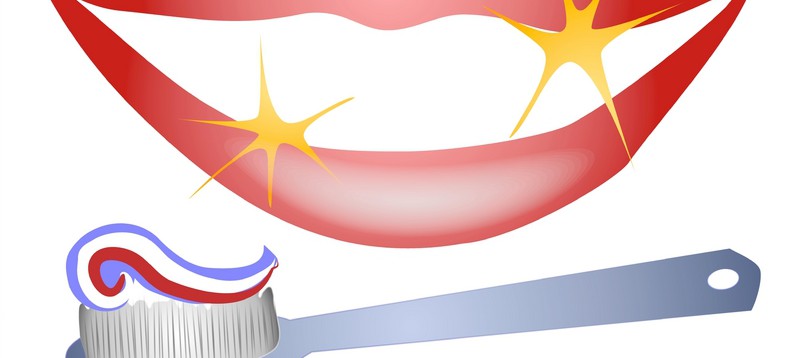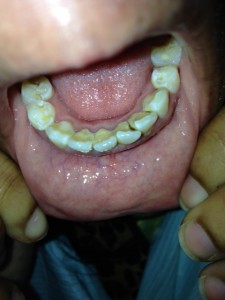Patient is D.M, age 36. African American. Female. Heavy/type II
Patient is allergic to penicillin. There are no other significant findings to report in medical history. Her vital signs were little high on the first visit at 133/101 RAS and pulse at 70. Patient was given a blood pressure fact sheet. Continuing the next visit I took her blood pressure again, which was 121/88 RAS and pulse at 75.
Patient is a non-smoker. No premedication is needed. Patient is not on any medications. She has TMJ bilateral clicking
Patient is missing two of her third molars, #1 and #16. On teeth #2, 3, and 31 patient has amalgams on the occlusal surface. Patient also has an occlusal buccal amalgam on tooth #14.
Patient has active carious lesions on the occlusal, distal surface of tooth # 17 and 18. She also has a carious lesion on the occlusal surface of tooth # 32. Her class of occlusion is type I. She also has an overbite of 10% and overjet of 3mm. Patient has attrition on teeth # 23 through 26.
Patient has generalized mild inflammation only on the papilla. Her gingiva is pink, firm, stippled with bulbous papilla. Patient has 4-5mm pockets; it is mostly generalized in the molar areas, and anterior # 22-25. Patient has moderate bleeding upon probing.
The patient’s initial PI was 1.1, which is classified as good. Patient had heavy calculus buildup on the lingual surface of the anterior teeth. In session one I taught her flossing, because I noticed her plaque was mostly in the interproximal areas.
My patient did go home and flossed, she showed success with removing interproximal biofilm. I also noticed her plaque increased to a 1.6, so it was the perfect time to teach her about brushing. I taught her the modified bass method, which I thought would be great for her, because I saw plaque mostly on the marginal area. Patient demonstrated good plaque removal.
Patient requires radiographs. I was able to expose 4 bitewings on the second visit. The radiographs corresponded and supported my clinical findings.
Patient does not smoke, or drink any alcohol on a daily basis.
There were no other factors such as economic, psychological, cultural, physical, legal, educational, or ethical in my assessment, which might affect the patient’s optimal health.
Yes the time interval between the last appointment and this appointment was appropriate because she was due for her 6months check up.
In the first visit all assessments were completed. I taught the patient flossing, which was successful. In this visit I also scaled the lower right quadrant. In the next and final visit I went over flossing, and taught tooth brushing. I also reevaluated previously scaled quadrant, which was the lower right quadrant. I was able to expose 4 bitewings, and scale the upper right, upper left, and lower left quadrants.
There were no medical, social, or psychological factors that impacted on the treatment. For home care, a manual toothbrush supported by the modified bass method was recommended for this patient. Flossing once a day was also recommended. Patient complied with all instructions given to her and showed great success with it.
Reflecting on my clinical treatment and faculty feedback, a positive experience that occurred in this session was my home care was very effective. It was effective because the patient’s oral health improved. After not flossing for 6months, she went home and flossed, and both the patient and I noticed a difference in her mouth.
Reflecting on my clinical treatment and faculty feedback, a clinical weakness I encountered was probing. I felt it was a little difficult to probe her mouth. My angulation was off, due to over angulation in the col area.
Patient was not referred to DDS, general or specialist for any conditions.
The patient’s response to the interventions introduced and taught were mainly positive. She understood the concepts of proper brushing and flossing and showed success with both. The patient did seem more interested in her oral health, especially since she was seeing a difference in her mouth.
From the initial visit to completion the patient’s gingiva started to heal and her papilla was less bulbous.





